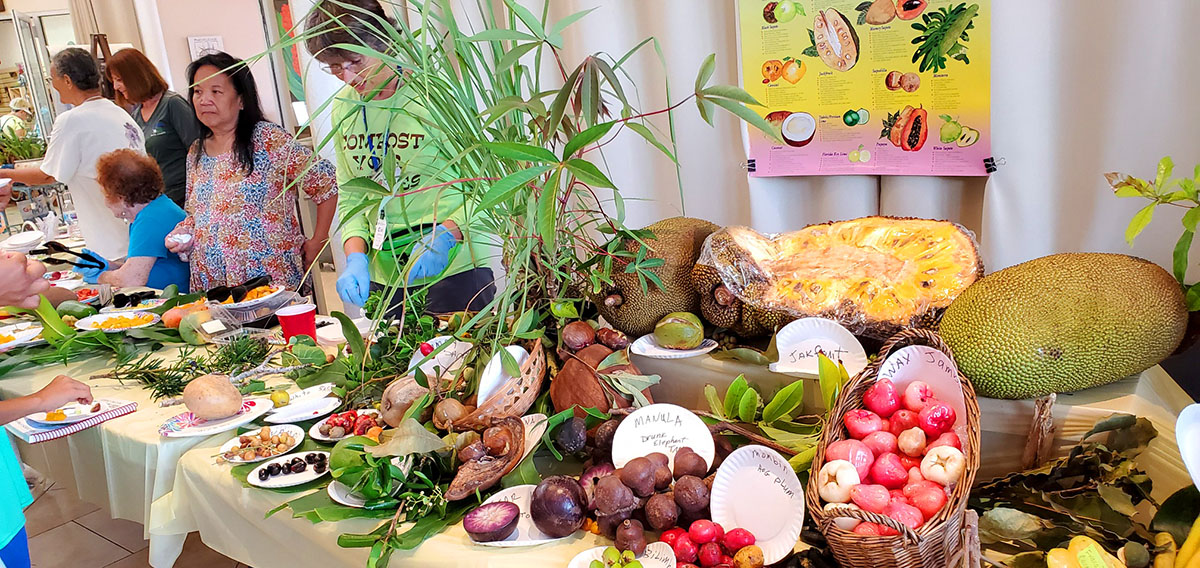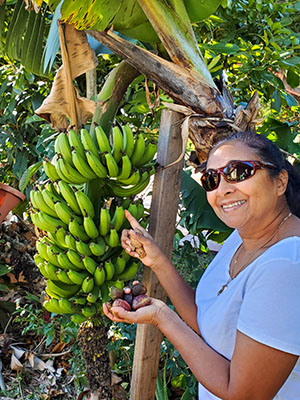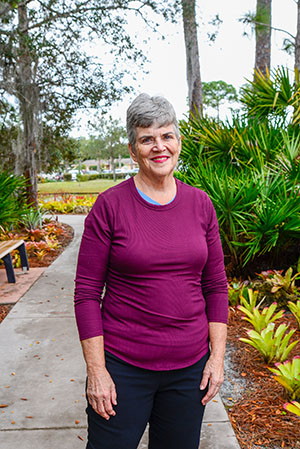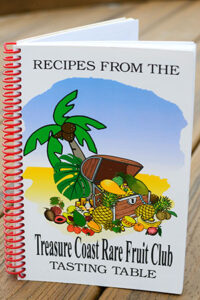Rare and Delectable
 Members of the Treasure Coast Rare Fruit Club gather and generously share the fruits of their labors at an annual Taste of the Tropics Festival event. TREASURE COAST RARE FRUIT CLUB
Members of the Treasure Coast Rare Fruit Club gather and generously share the fruits of their labors at an annual Taste of the Tropics Festival event. TREASURE COAST RARE FRUIT CLUB
Club members explore the flavors of exotic fruit grown in Florida
BY WENDY DWYER

Everyone knows about Florida's oranges, grapefruits, strawberries and even pineapples, but what many might not know is that the climate in the region's backyards is practically perfect for growing a host of other delicious and less widely known fruits.
When it comes to exotic or rare fruit, Floridians are living in a little slice of paradise for growing and sampling of jaboticaba, lychee, loquat, mamey sapote, the giant jackfruit or the delightfully delectably named chocolate pudding fruit.
And where might one learn how to grow your own miracle fruit?
On the third Thursday of the month, Port St. Lucie Botanical Gardens hosts a meeting of the Treasure Coast Rare Fruit Club, a group of community members and visitors who are interested in learning about growing and tasting the exotic flavors that live among us.
One club member, Bobbi Spencer of Vero Beach, says her love of growing things motivated her to attend a meeting of the Palm Beach Rare Fruit Council. There, she met a woman who shared her knowledge and introduced Spencer to a variety of fruits.
"It just became addictive," says Spencer, who continued her quest to learn more about exotic fruits. "The Treasure Coast Rare Fruit Club welcomes guests at our 7 p.m. meetings every month, and there is never a charge for your first meeting. We always have a fantastic tasting table, plant auction, raffle and monthly educational program," she says.


The annual membership for the organization starts at just $20 a year, a small price for the chance to sample so many new and exotic treats.
Like many of Florida's residents, Spencer included, most are unaware that a number of the rare and exotic fruits that grow well in Florida are not native to the state. Spencer, who originally hails from West Virginia, says that rare fruit organizations like the Treasure Coast club do not promote any fruits like the mimosa tree, which is also known as Persian silk tree, that are considered invasive
For example, the chocolate pudding fruit, which is sometimes called a black sapote, is native to Mexico but grows well in Florida, too. It's a tropical persimmon and when it is very ripe, its skin turns dark green and becomes very tender to the touch, making it look like it's too ripe to mess with.
But if treated with tender loving care, there will be a creamy, almost black pulp that will look like a childhood dessert when the fruit is sliced in half. There may be a few seeds, but they can be easily discarded to keep from detracting from the fruit's creamy goodness.
Club secretary Tracie Atkinson of Port St. Lucie says she's never really found a rare or exotic fruit she didn't enjoy, especially since everything grown by club members is organic. Her favorite is also one she finds most challenging to grow - sugar apples.
"They taste like a very ripe pear almost," Atkinson says.
She added that many of the rare and exotic fruits take on a completely different taste when dehydrated.

Raised in Wisconsin, Atkinson's passion for rare fruits came through a friendship she and her mother had withmaster gardeners. She and her 91-year-old mother joined the inaugural rare fruit group in 2008 when there were fewer than a dozen members. Though membership took a big hit during the pandemic, there are still more than 100 active members and Atkinson says monthly meetings are a great way to learn and connect with other enthusiasts.
"You gain so much from going to just one meeting," Atkinson says. "Between the speakers' knowledge and the raffle table, which is like Christmas every month, it's a great time. There are plants, fruits, and stuff for free, plus there is a great auction and we have a lot of camaraderie" she says.


When the group hosted Taste of the Tropics, its last large event prior to the pandemic, there were more than 100 varieties of mangoes available for attendees to sample and learn about.
"We couldn't slice fast enough to keep up with demand," says Atkinson, whose own initial interest was in growing what her family would eat: avocadoes, mangoes, different types of bananas, pineapples and some citrus, including key lime.
Spencer says some of her other favorites in the area range in size, texture, and flavor from the very small Barbados cherry to plants like the carambola [star fruit], canister, avocado, monstera delicious, guava, atemoya, sugar apple, any number of the banana varieties, dragon fruit [pitaya], and the monster jackfruit, which is about two feet long and can weigh up to 40 pounds.
One interesting and noteworthy example of a happy surprise in the exotic fruit world is the miracle fruit, or Synsepalum dulcificum, a member of the Sapotaceae family. When eaten, the berry of the miracle fruit will magically cause any subsequently consumed sour foods to taste sweet.
Spencer says that, though there are many exquisitely beautiful fruits and plants in Florida, it's important to be an educated consumer.

"Know your fruit rather than hoping something is edible," she says. "There are surprises you do not want to encounter, like the akee. It's a wonderful fruit, but if it is not properly prepared, it is poisonous. You must know what is edible and what to leave for the animals who know."
For more information about the exotic and rare fruits that Florida has to offer, stop by for one of the club's monthly meetings. Other information is also available at sites like the Rare Fruit Society of Florida [www.rarefruitsociety.org] and from the University of Florida Institute of Food and Agricultural Sciences Cooperative Extension office in Fort Pierce.
Master Gardeners and experts also can offer advice on how to find, grow and enjoy all the rare fruits in the area and which ones to avoid, too. Or attend a club meeting at the Port St. Lucie Botanical Gardens where visitors can learn about various fruits and trees and enjoy educational trainings and tasting events.
Feb. 28, 2022
